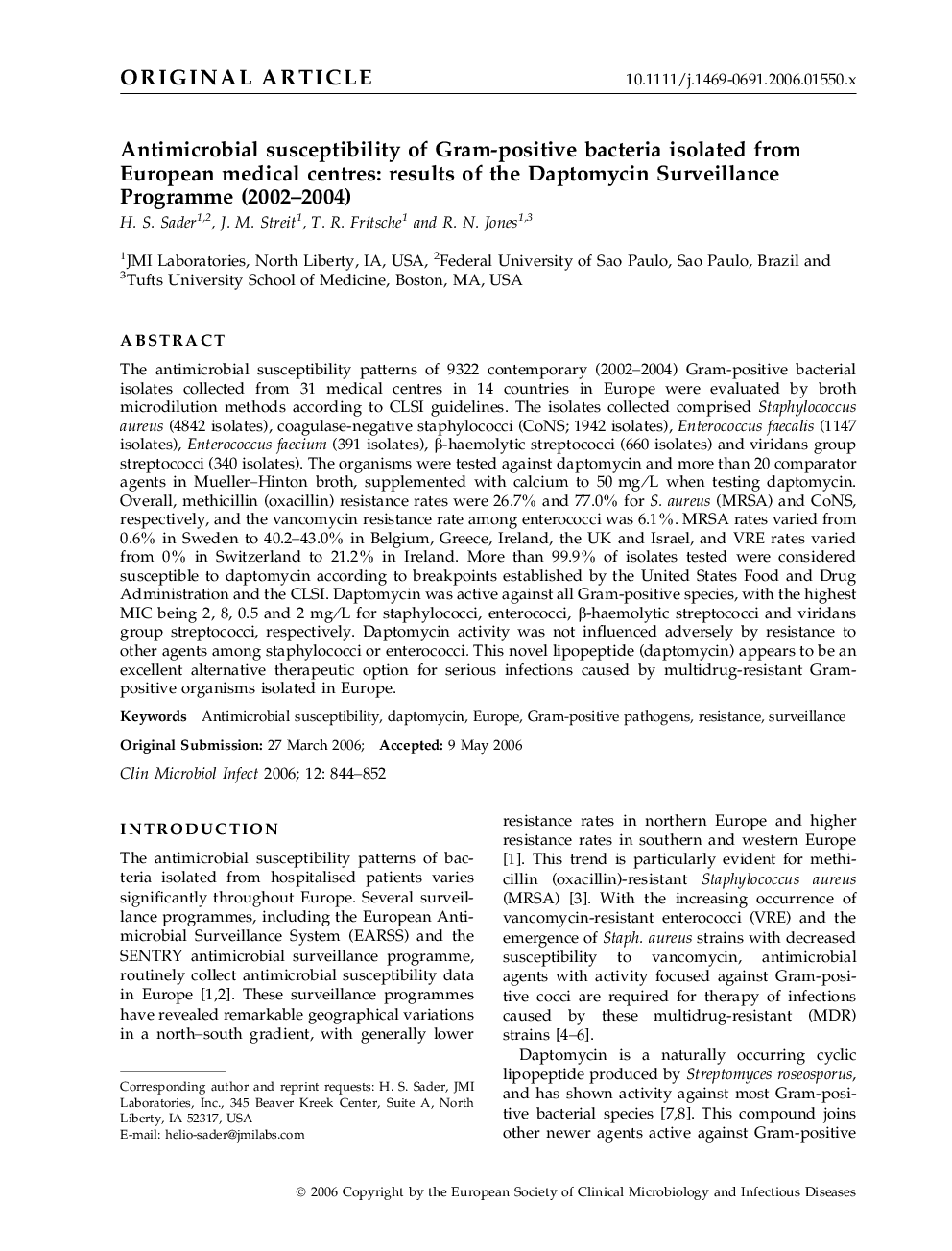| Article ID | Journal | Published Year | Pages | File Type |
|---|---|---|---|---|
| 3398822 | Clinical Microbiology and Infection | 2006 | 9 Pages |
ABSTRACTThe antimicrobial susceptibility patterns of 9322 contemporary (2002–2004) Gram-positive bacterial isolates collected from 31 medical centres in 14 countries in Europe were evaluated by broth microdilution methods according to CLSI guidelines. The isolates collected comprised Staphylococcus aureus (4842 isolates), coagulase-negative staphylococci (CoNS; 1942 isolates), Enterococcus faecalis (1147 isolates), Enterococcus faecium (391 isolates), β-haemolytic streptococci (660 isolates) and viridans group streptococci (340 isolates). The organisms were tested against daptomycin and more than 20 comparator agents in Mueller–Hinton broth, supplemented with calcium to 50 mg/L when testing daptomycin. Overall, methicillin (oxacillin) resistance rates were 26.7% and 77.0% for S. aureus (MRSA) and CoNS, respectively, and the vancomycin resistance rate among enterococci was 6.1%. MRSA rates varied from 0.6% in Sweden to 40.2–43.0% in Belgium, Greece, Ireland, the UK and Israel, and VRE rates varied from 0% in Switzerland to 21.2% in Ireland. More than 99.9% of isolates tested were considered susceptible to daptomycin according to breakpoints established by the United States Food and Drug Administration and the CLSI. Daptomycin was active against all Gram-positive species, with the highest MIC being 2, 8, 0.5 and 2 mg/L for staphylococci, enterococci, β-haemolytic streptococci and viridans group streptococci, respectively. Daptomycin activity was not influenced adversely by resistance to other agents among staphylococci or enterococci. This novel lipopeptide (daptomycin) appears to be an excellent alternative therapeutic option for serious infections caused by multidrug-resistant Gram-positive organisms isolated in Europe.
